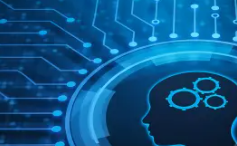
Clarifying the complex
What we do at sea nettle
Our Core Services
Bringing clarity to leadership, team building and technology

Leadership
Insight and understanding from experienced leaders

Team Building
Enhancing communication, collaboration and performance through years of hands-on experience creating high performing teams

Technology
Demystifying the complexity in high tech, computing and AI through a passion for clarity and understanding
Our Vision
PhD scientists might not be your first idea of a professional to help enhance your organisation skills in learning and development. We believe that the combined skills of technological understanding, behavioural science and passion for clarity prove otherwise. We bring a wealth of expertise to the table, combining personal and intellectual skills to tackle complex challenges. Our proficiency lies not only in our specialist technical fields but also our ability to clarify intricate concepts, foster collaborative team environments, enhance leadership qualities, and demystify complex technologies.
Clarifying Complexity: we have over many years developed an ability to excel at breaking down sophisticated ideas into understandable segments. Our deep understanding allows us to identify the core components of complex systems and explain them in a way that is accessible to non-experts. This skill is crucial in interdisciplinary collaborations where diverse teams must work together to solve multifaceted problems.
Building Teams: The ability to build and maintain effective teams is another hallmark of our expertise. They understand that the synergy of a well-coordinated team can lead to greater innovation and productivity. By leveraging their interpersonal skills, they create an environment of trust and mutual respect, where each member’s contributions are valued.
Enhancing Leadership: PhD scientists often take on leadership roles within their teams. They use their experience to mentor others, guiding them through the intricacies of research and development. Our leadership style is often characterized by a commitment to fostering the growth of team members, encouraging them to develop their own leadership skills.
Demystifying Technology: In an era where technology is rapidly advancing, these scientists play a pivotal role in making technology accessible and understandable. We work to bridge the gap between cutting-edge technological advancements and practical applications. By doing so, we ensure that technology serves the needs of society and contributes to the betterment of all.
In summary, our expertise is multifaceted. We are not only masters of our respective disciplines but also adept at simplifying the complex, building cohesive teams, leading with vision, and making technology relatable and useful. Our combined personal and intellectual skills are indispensable in navigating the challenges of modern research and innovation.

Simplicity: The Heartbeat of Innovation
We thought – no matter how often cited – we could do no better than to draw from Steve Jobs when talking about our passion for simplification in the world of technology. Whenever asked about the future of technology Steve Jobs would talk about the next real revolution lying not in complexity, but in simplicity.
Look around. The tech world is cluttered with features, bloated with options. It’s enough to make your head spin. It is possible to forget that technology, at its core, is a tool. It should empower, not confuse.
When one thinks back to the Macintosh computer. Apple Inc. didn’t invent a new machine; they made computers understandable: stripped away the clutter, the cryptic commands and put a beautiful, intuitive interface in front of the user.
Simplicity is the ultimate sophistication. It takes hard work, discipline, to focus on what truly matters. To say no to a thousand features and yes to the few that make a real difference.
Because when things are simple, they become elegant. They become magical. People can use them, understand them, and create with them. That’s where the true innovation lies – in unleashing human potential, not burying it under layers of complexity.
The future belongs to those who can cut through the noise and deliver experiences that are clear, intuitive, and beautiful. That’s our vision at sea nettle. Stay tuned.

AI in L&D: Bridging the Generational Divide in Learning Needs
The landscape of Learning and Development (L&D) is undergoing a significant transformation driven by Artificial Intelligence (AI). This technology holds immense potential to personalize learning experiences, automate tedious tasks, and cater to the evolving needs of a diverse workforce. However, a critical question emerges: how effectively can AI bridge the generational divide in learning preferences and styles? This article explores the current adoption of AI in L&D, focusing on the distinct needs of Gen Z learners and senior management, drawing insights from three key resources:
- The Savvy Report by DHT Associates: This report (https://donaldhtaylor.co.uk/insights/) sheds light on the learning preferences of Gen Z, highlighting their tech-savviness, desire for personalization, and focus on career development.
- How People Create and Destroy Value with Gen-AI by BCG: This paper (https://www.bcg.com/publications/2023/how-people-create-and-destroy-value-with-gen-ai) delves into the collaborative potential between humans and AI, emphasizing the importance of human expertise in guiding AI development and ensuring its alignment with human values.
- What Gen Z is Learning by LinkedIn: This article (https://learning.linkedin.com/resources/gen-z-infographic) explores the specific skills Gen Z seeks to develop, including digital fluency, adaptability, and problem-solving.
The Rise of AI in L&D
The integration of AI in L&D is on the rise. AI-powered platforms can automate administrative tasks like course enrollment and completion tracking, freeing up L&D professionals to focus on more strategic initiatives. Additionally, AI can personalize learning journeys by tailoring content and delivery methods to individual learner needs and preferences.
For instance, AI-powered chatbots can provide on-demand learning support, answer questions, and offer personalized feedback. Adaptive learning platforms can adjust the difficulty level of content based on a learner’s performance, ensuring they are neither overwhelmed nor underchallenged.
Meeting the Needs of Gen Z Learners
Gen Z, the first generation to grow up entirely in the digital age, has distinct learning preferences. They are accustomed to instant access to information, crave interactive and engaging learning experiences, and prioritize continuous learning for career development (https://donaldhtaylor.co.uk/insights/). AI presents a unique opportunity to cater to these preferences.
- Personalized Learning: AI can personalize learning pathways for Gen Z by analyzing their learning styles, strengths, and weaknesses. This allows for the creation of targeted learning journeys that are both relevant and engaging.
- Microlearning: Gen Z thrives on bite-sized, easily digestible learning content. AI can curate microlearning modules that fit seamlessly into their busy schedules.
- Gamification: Gamification techniques, where learning is transformed into a game-like experience, can be highly effective with Gen Z. AI can personalize game mechanics and reward systems to keep Gen Z learners motivated and engaged.
- Social and Collaborative Learning: Gen Z values collaboration and social interaction. AI-powered platforms can facilitate social learning experiences by connecting learners with peers and mentors, fostering knowledge sharing and peer-to-peer learning.
Addressing the Needs of Senior Management
Senior management often has different learning needs compared to Gen Z. They may require:
- Focus on Strategic Skills: Upskilling in areas like digital transformation, leadership development, and strategic decision-making is crucial for senior leaders. AI can curate content and learning pathways that address these specific needs.
- Time-Constrained Learning: Senior leaders have limited time for formal learning. AI can deliver bite-sized, just-in-time learning modules that can be accessed on-demand, even during busy schedules.
- Scenario-Based Learning: AI can create realistic and immersive simulations that allow senior leaders to practice decision-making skills in a safe environment.
- Mentorship and Coaching: While AI cannot replace human interaction, it can supplement mentorship programs by identifying areas for improvement and suggesting relevant learning resources.
Bridging the Gap: A Human-Centered Approach
While AI offers tremendous potential for L&D, it is crucial to remember that it is a tool, not a replacement for human expertise. The key to success lies in a human-centered approach that leverages the strengths of both AI and human L&D professionals.
Here are some key considerations:
- Human Expertise in AI Development: As highlighted by BCG (https://www.bcg.com/publications/2023/how-people-create-and-destroy-value-with-gen-ai), human expertise is vital in guiding AI development and ensuring it aligns with human values and learning objectives. L&D professionals play a critical role in curating high-quality content, designing effective learning experiences, and providing human guidance and support.
- Ensuring Explainability and Transparency: AI-powered recommendations and decisions should be transparent and explainable. This allows learners to understand the rationale behind the learning suggestions and fosters trust in the system.
- Promoting Self-Directed Learning: AI can empower learners to take ownership of their learning journeys. L&D professionals can leverage AI to curate personalized learning pathways while fostering a culture of self-directed learning, encouraging Gen Z and all learners to take an active role in their development.
Conclusion
The integration of AI in L&D presents a unique opportunity to bridge the generational divide in learning needs. By leveraging AI’s capabilities for personalization, automation, and content delivery, L&D professionals can create a learning ecosystem that caters to the diverse preferences and styles of Gen Z, senior management, and all learners across the organization. However, it is crucial to remember that AI is a tool that complements, not replaces, human expertise. A successful L&D strategy will combine the power of AI with the human touch, fostering a culture of continuous learning and development for all.
This approach not only equips employees with the skills they need to thrive in the ever-evolving workplace but also fosters a more engaged and productive workforce, ultimately driving organizational success.


Ready to seek greater clarity?
Start your journey with us today
We’re here to listen, collaborate, and help you drive your vision forward. Whether it’s through an email, or a phone call, initiating a conversation is the first step towards unparalleled success.